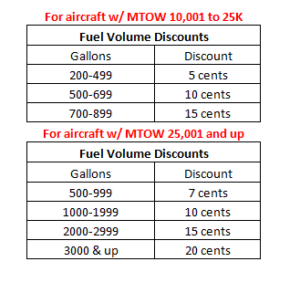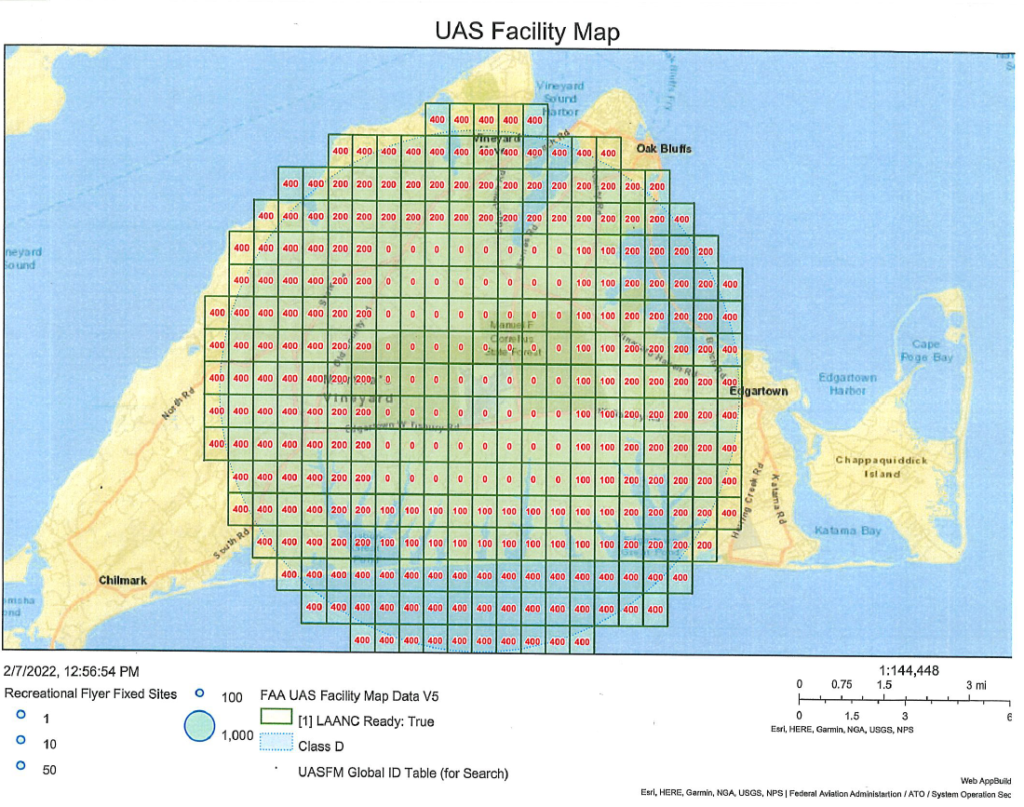Fuel Prices
The Martha’s Vineyard Airport is the sole provider of fuel on the Airport. We readily have enough Jet-A and 100LL fuels available to meet peak demand. Advanced trip notification is requested to better assist our customers’ needs.
Fueling Hours
Fueling is provided 24/7
The following volume discounts are also available on fuel purchases:
FBO Services
MVY is an FAA Index B Part 139 commercial airport.
FBO Service Hours
24 hours
Fuel Hours
24 hours
Please call us at (508) 693-7022 x1 for more information
Services Available
Amenities:
- Executive Conference Room
- Flight Planning/ Weather Center
- Crew Lounge/ Rest Area
- Ground Handling
- Aircraft Towing
- Wi-Fi
- Quick Turn Services
- Complimentary coffee, water, newspapers
- Wheelchair
- Kitchenette
- Onsite Car Rental Companies
- NATA Safety 1st Trained Line Service
- Premium Keurig Coffee
Aircraft and Passenger Services:
- Ground Power Units
- De-icing and Anti-icing (TYPE I and IV)
- Oil (2380 and 15W50)
- Tie Downs
- Ramp (aircraft parking)
- Potable Water
- Pre-Heat and Plug-in Engines
Fuel:
- Jet A/Jet A +
- AvGas
Please Contact the Following Directly for Third-Party Services:

www.NewEnglandAircraftDetailing.com
J&B Services – Lavatory Service: Phone: 508-627-0166 jbjetcorp@gmail.com
Landing Fees (Billed by Vector)
Landing fees are charged to all transient GA aircraft operating at MVY by Vector Airport Systems. Landing fees will be assessed at the time of departure and billed at the following rates:
$3.00 x 1,000 lbs. MTOW over 4,000 lbs.
$15 flat fee for aircraft with maximum certificated takeoff weight (MTOW) of 4,001-6,000 lbs.
Payment is Made Directly to Vector:
Self-Service Portal: Vector’s self-service web portal (https://payment.planepass.com)
Contact Vector: For payment or billing inquiries, Vector can be reached at 888-588-0028 (X700 or Option 1) or by email at billing@vector-us.com
Their office hours are Monday through Friday 9 am to 5pm EST with most federal holidays observed as well as Christmas Eve and the Friday after Thanksgiving.
Ramp Fees:
Charged PER CALENDAR DAY. The first day’s ramp fee can be waived with the following minimum fuel purchase, payment is made to the FBO:
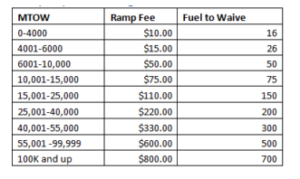
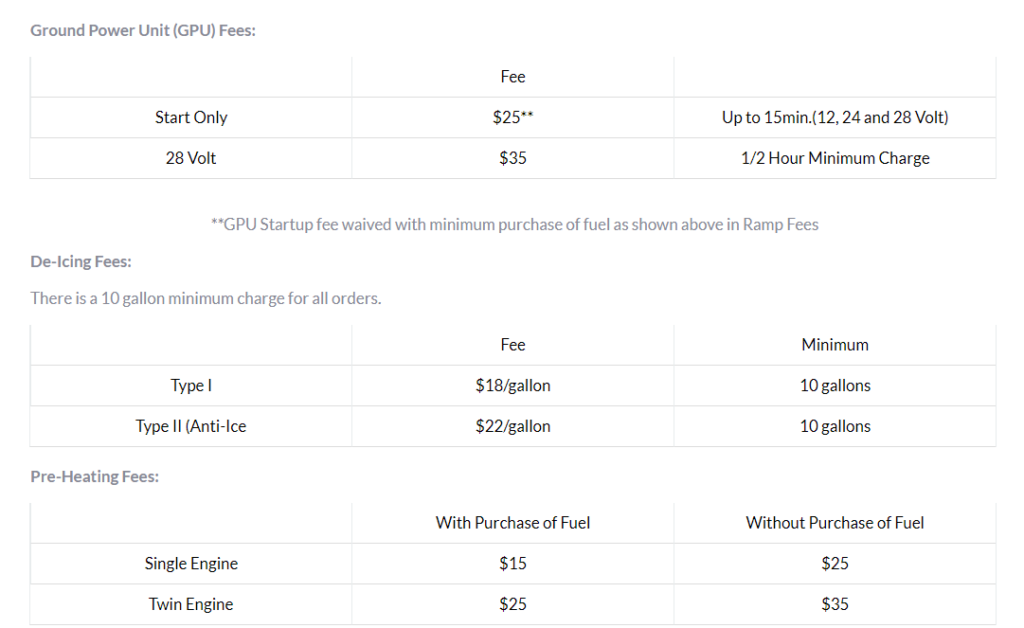
All pilots are requested to become familiar with the below diagram in order to better assist Air Traffic Control and Airport Operations personnel in traffic flow and security measures.
Please note the RED SHADED areas which depict either based tenant reserved areas, ARFF access routes, or secure ramp space for airline operations.
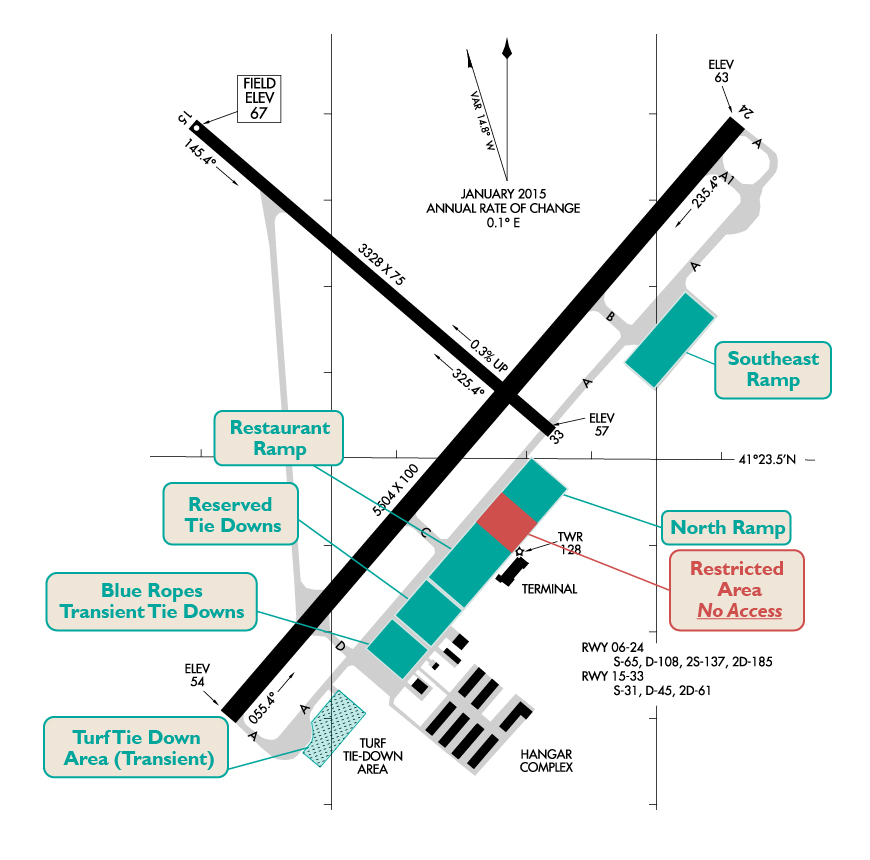
Crocker House: (508) 693-1151
Little Rock Farm Catering: (508) 693-5651
Revel Catering: (508) 645-5000
A variety of companies offer charter aircraft services to and from Martha’s Vineyard Airport. We have listed a few of them here for your convenience. Keep in mind, this is only a sampling, not a recommendation for service.
Action Airlines (800) 243-8623
Aero Charter NE (833) 693-5444
Chester Charter (860) 526-4321
Hopscotch Air (877) 255-2467
Janus Air (508) 905-9999
Linear Air (877) 254-6327
Plane Sense (866) 214-1212
Reliant Air Charter (203) 743-5100
Resort Air Charter (800) 683-9330
Shoreline Aviation (781) 834-4928
Talon Air Jets (631) 753-8881
Tradewind Aviation (800) 376-7922
Reserved Tie Downs
Coming Soon!
UNMANNED
AIRCRAFT SYSTEMS
Aviation Safety & Checklist for Drone Pilots
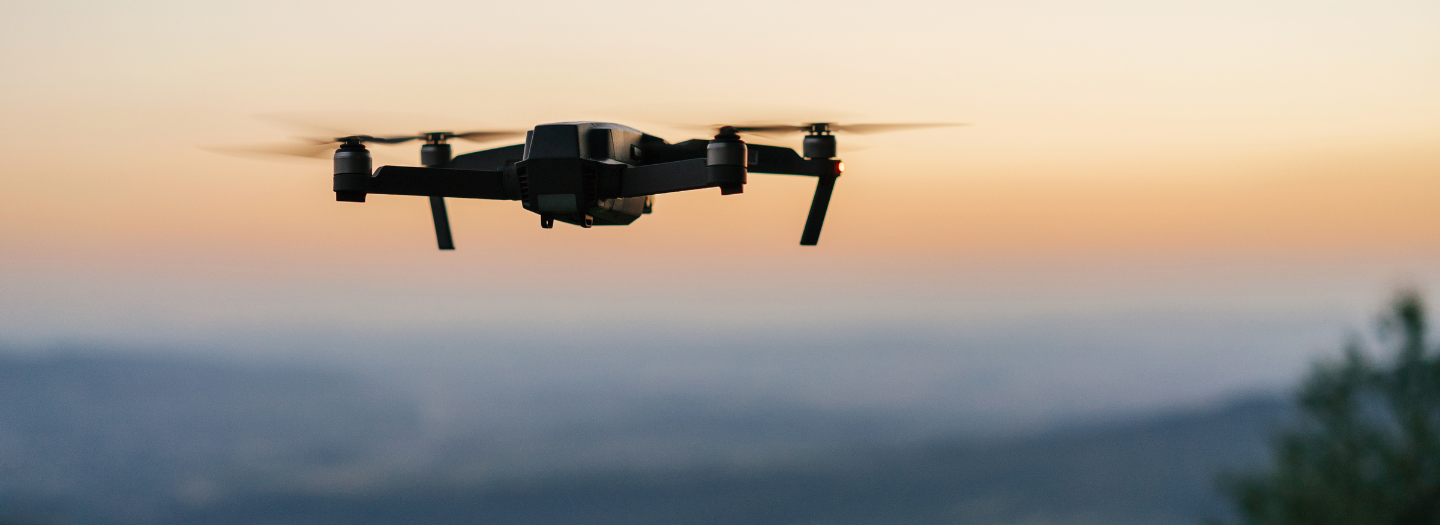
Unmanned Aircraft Systems (UAS) – Drones
Unmanned Aircraft Systems (UAS), also referred to as Drones come in a variety of shapes and sizes and are flown for many different purposes. Integration of UAS into the national airspace can become challenging for the user, aviation community and governing agencies to insure a safe and efficient way of using UAS.
UAS technology continues to evolve, and therefore agency rules and policies must be flexible to accommodate a constant change to these processes.
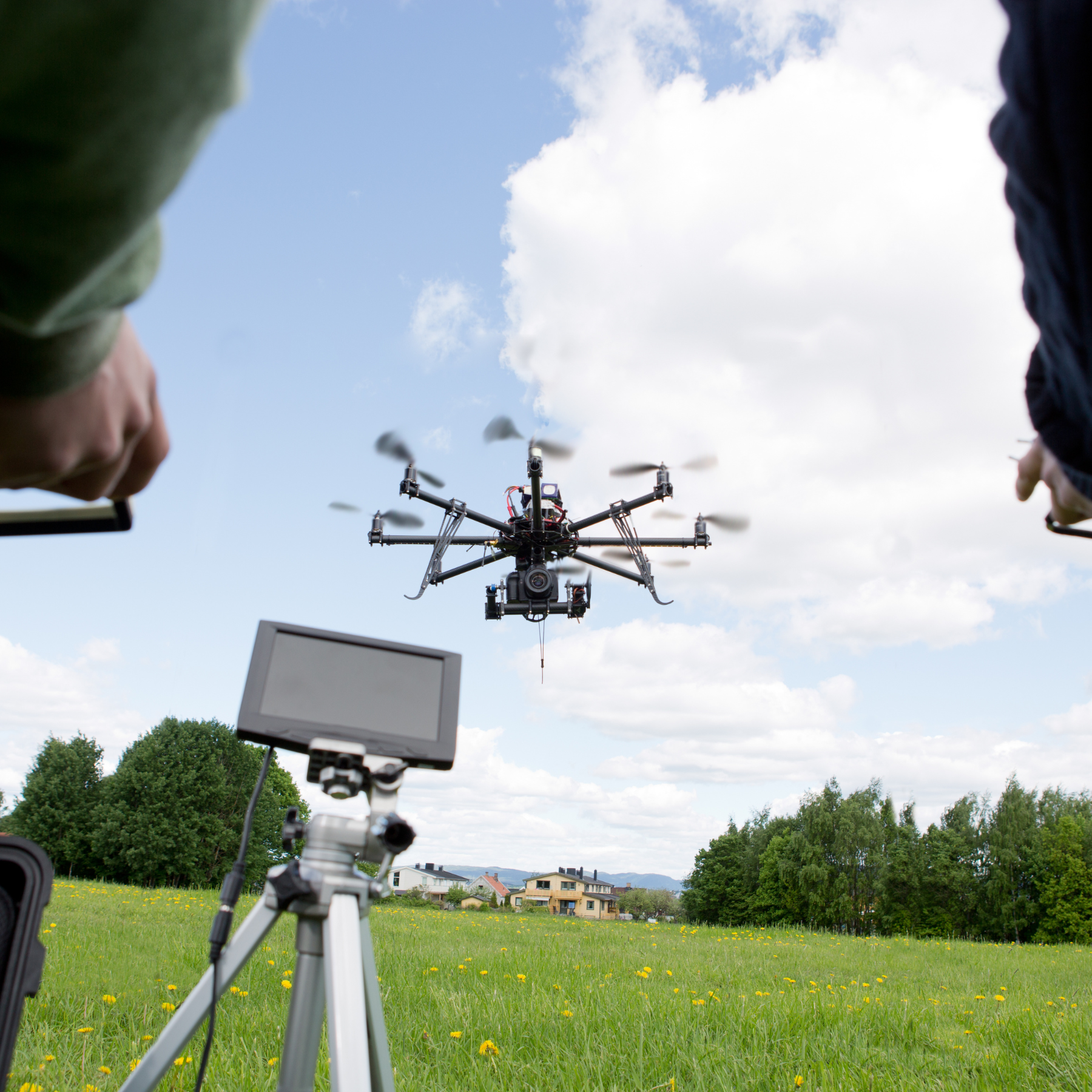
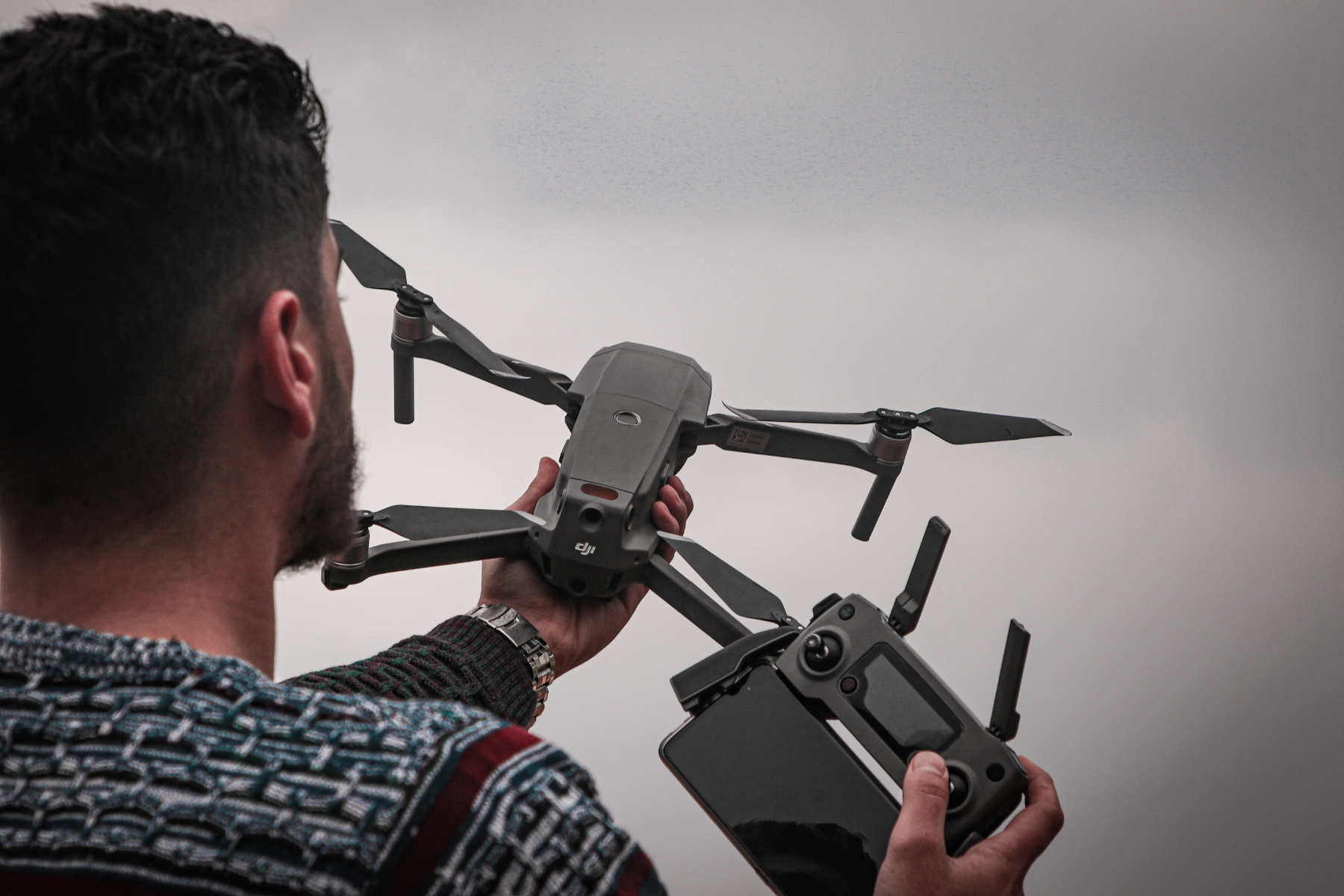
Types of UAS Operations
Determine what type of drone operating will be done. Rules and safety tips exist to help you fly in the national airspace. Once you determine what type of drone user you are, you can apply the appropriate rules and regulations to your specific type of flying.
- Recreational Flyer (USC 44809)
- Community- Based Organization (Advisory Circular 91-57B)
- Certified Remote Pilot / Commercial Operator (14 CFR Part 107 Guidelines)
- Public Safety or Government User (Public Aircraft Operation , ( 49 U.S.C))
- Educational User (Drone Rules for Education)
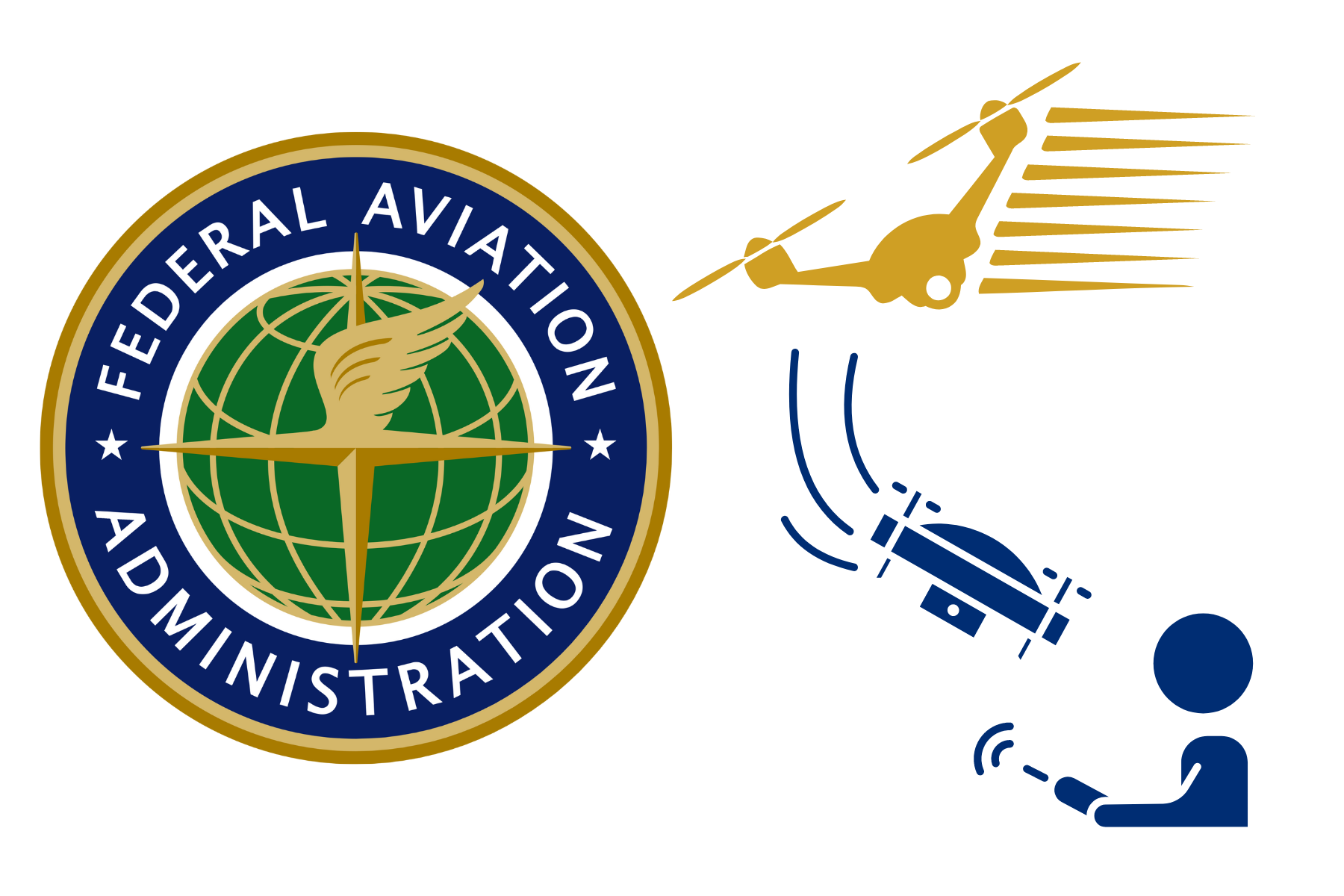
User Identification Tool
If you are unsure what type of user you are, you can use the User Identification Tool for guidance. The User Identification Tool provides a short series of yes or no questions that will guide you to understand what type of user operations will be conducted based on your answers. The result will provide you with what type of operator you are, what type of guidelines to operate under, and FAA UAS contact information. User questions include but are not limited to items below.
- Are you a Government Agency?
- Are you a Citizen of the United States?
- Are you flying for business of commercial enterprise?
- Does your drone weigh more than 55 pounds?
- Are you at least 16 years old?
- Does your operation involve package delivery or agricultural spraying?

UAS – Weight Category
UAS operations have specific requirements based on the weight of the Drone.
- Flying a drone 55 pounds or less and flown exclusively under Exception for Recreational Flyers does not need to be registered.
- Flying a drone below 55 pounds following Part 107 or USC 44809 guidelines will need to be registered.
- Flying a drone 55 pounds and above, you must contact FAA via email or phone (UAShelp@faa.gov or 884 FLY-MYUA) for guidelines on Airworthiness Certification or Special Authority for Certain Unmanned Systems (U.S.C. 448007).
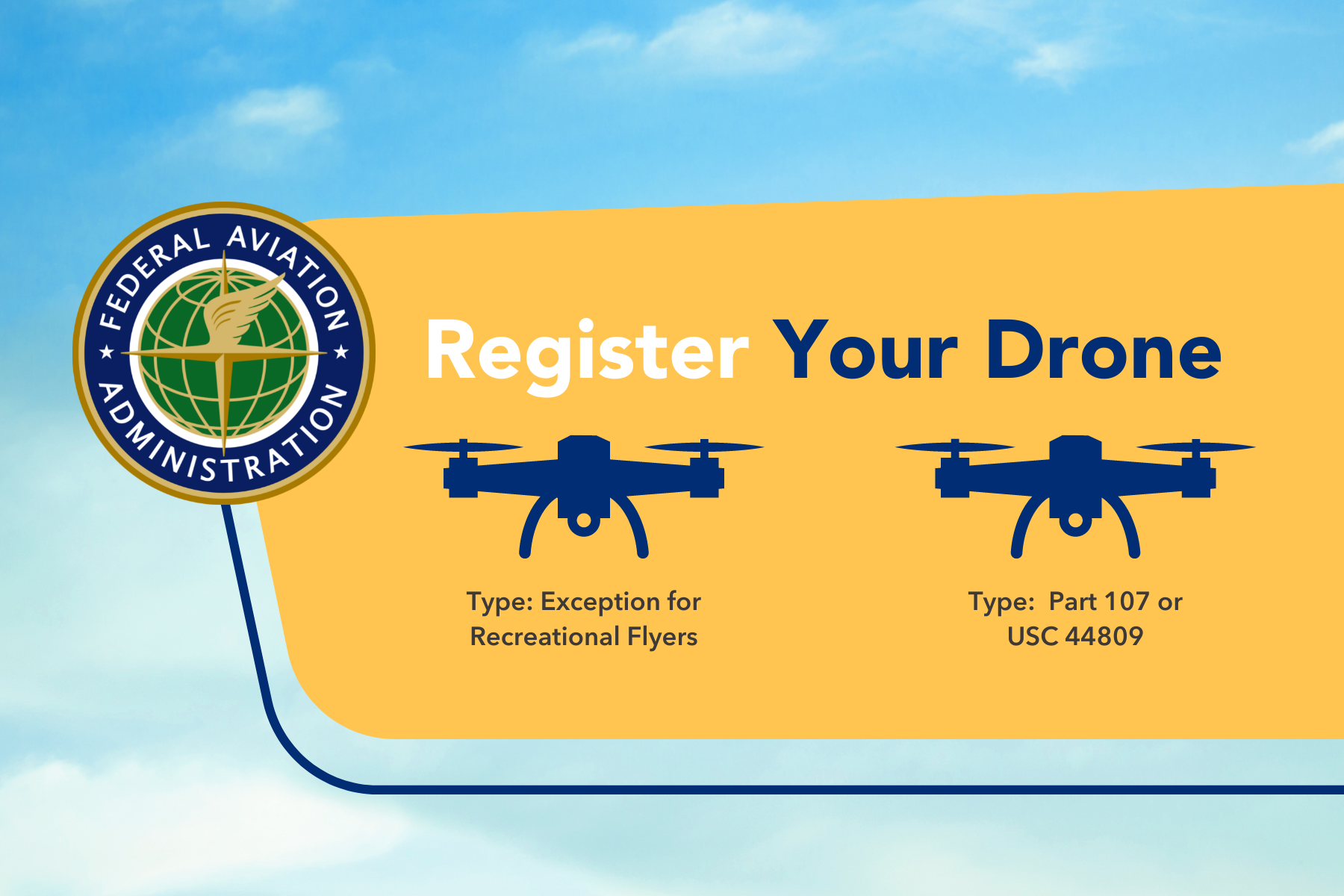
Register Your Drone
All UAS-Drones must be registered with the FAA. When registering your Drone, you must register it based on the type of flying. You must select the appropriate type of registration.
- Part 107
- Exception for Recreational Flyers
Register you drone online or by mail on the Federal Aviation Administration (FAA) website. Information on registration fees, qualifications, requirements, and registration renewal can be found on the Register your Drone section of the FAA UAS webpage.

The Recreational UAS Safety Test (TRUST)
Recreational flyers are required by FAA to pass an aeronautical knowledge and safety test known as The Recreational UAS Safety Test (TRUST).
This test provides education and testing for recreational flyers on important and safety regulatory information. Upon completing of the TRUST, a certificate of completion will be provided.
It is up to the user to keep records of the certificate. The test can be taken through FAA approved test administrators listed on the FAA website The Recreational UAS Safety Test (TRUST) (faa.gov).

Pilot Certificate
Flying an unmanned aircraft that weigh less than 55 pounds (25kg) for work, business, or under FAA’s Small UAS Rule (Part 107) will require a Remote Pilot Certificate from the FAA.
To become an FAA- Certified Drone Pilot, you must be able to meet the requirement below, you must:
- Be at least 16 years old
- Be able to read, write, and speak English
- Be in physical and mental condition to safely fly a UAS
- Pass a knowledge test
- Register your Drone
- Keep your Remote Pilot Certificate Current
If you are an existing Part 61 Certificate holder, you must be able to meet the requirement below, you must:
- Hold a pilot certificate issued under 14 CFR Part 61
- Have completed a flight review within the previous 24 months
Review the full process to get your Remote Pilot Certificate on the FAA Commercial Operators webpage.
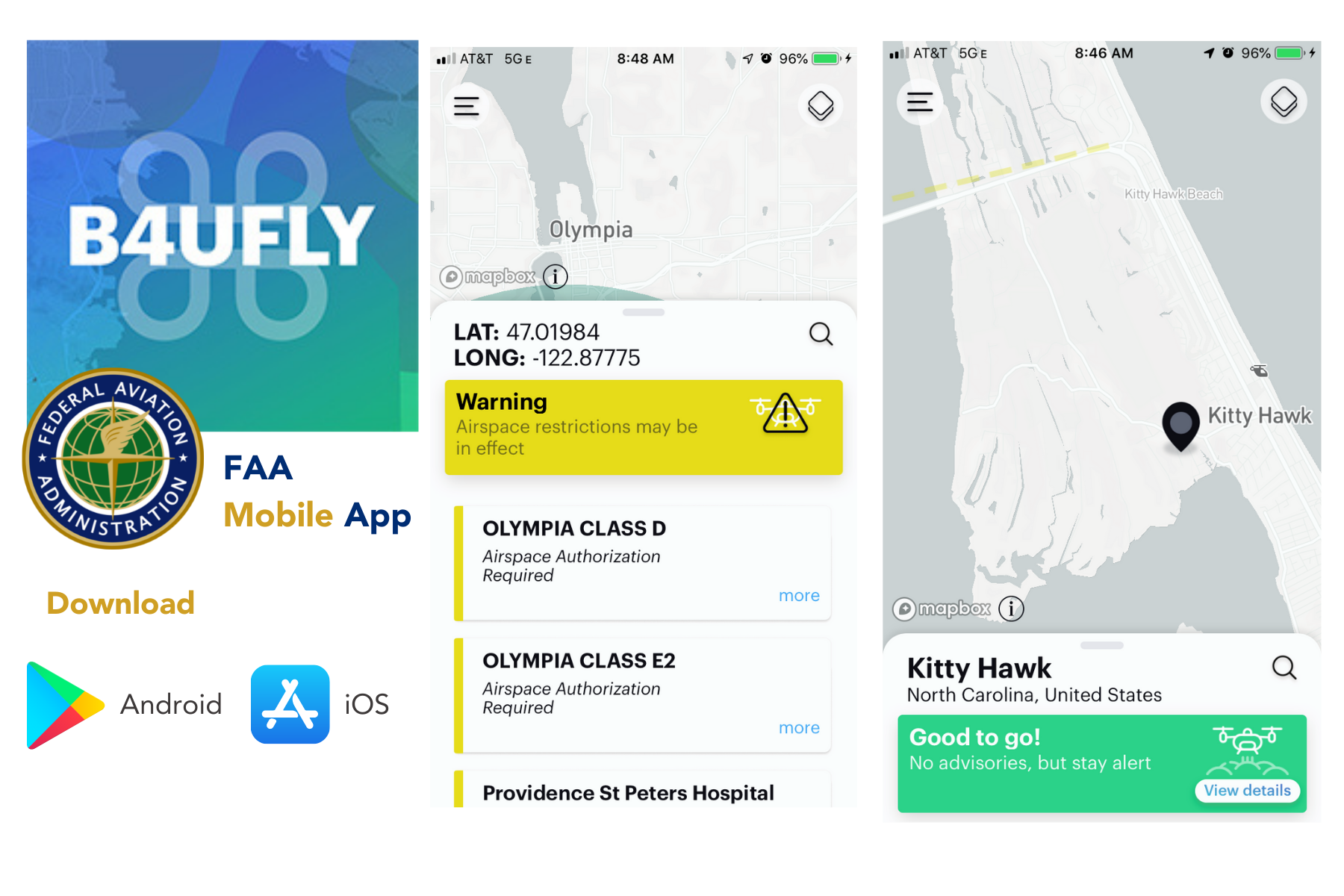
Mobile Application
FAA has developed preflight planning website and mobile app (B4UFLY) to improve the recreational user experience that allows the user to know if it is safe to fly your drone. Interactive maps will provide guidance on where users can and cannot fly. Key features include:
- A clear “status” indicator that informs the operator whether it is safe to fly or not. (For example, it shows flying in the Special Flight Rules Area around Washington, D.C. is prohibited.)
- Informative, interactive maps with filtering options.
- Information about controlled airspace, special use airspace, critical infrastructure, airports, national parks, military training routes and temporary flight restrictions.
- The ability to check whether it is safe to fly in different locations by searching for a location or moving the location pin.
- Links to other FAA drone resources and regulatory information.
Access B4UFLY information for web and mobile on the FAA website on the B4UFLY Mobile Appwebpage.
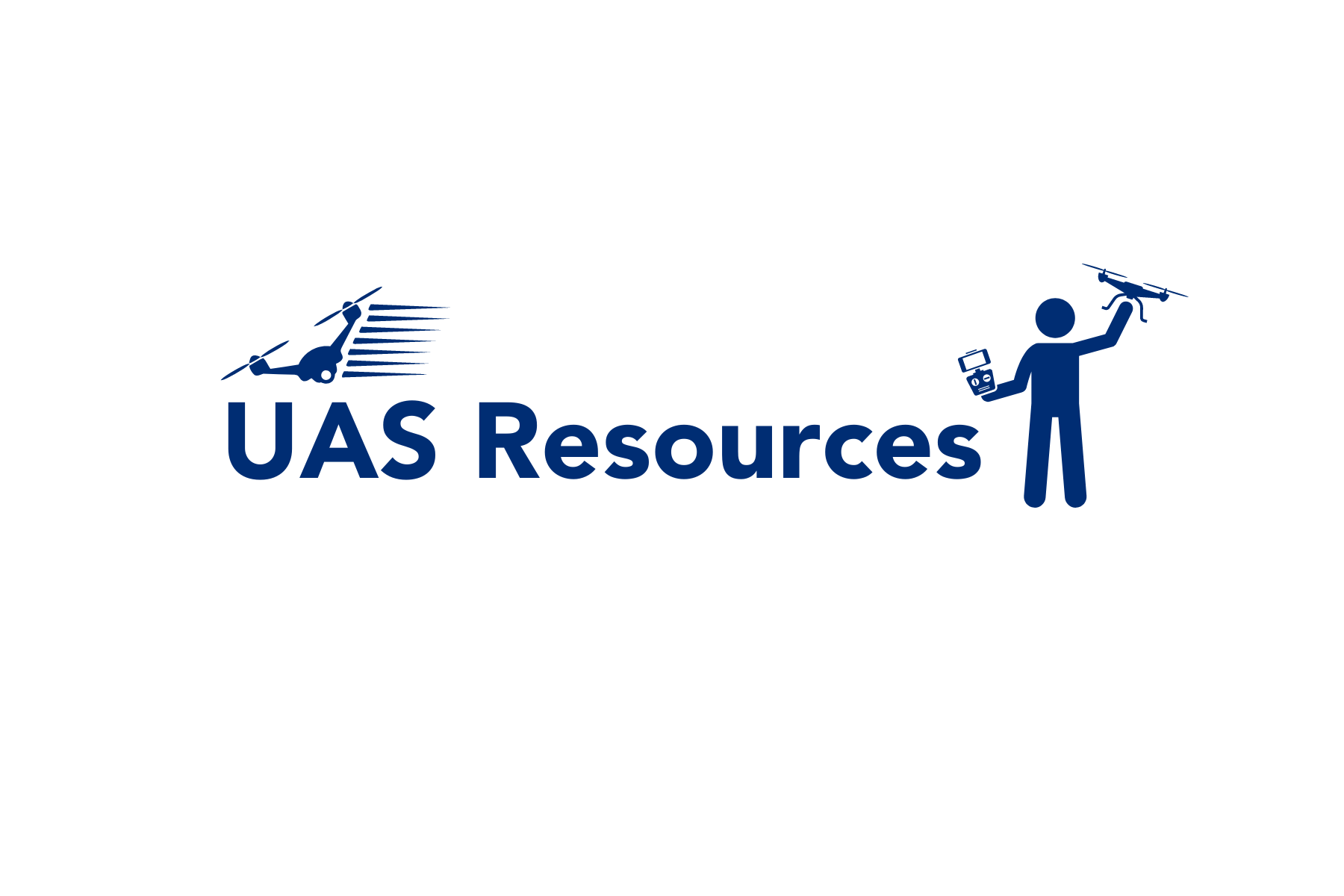
Resources
Federal and state resources available to operators regarding UAS operations, safety, regulation, and guidance can be found below.
Federal Aviation Administration
Unmanned Aircraft Systems (UAS)
Small Unmanned Aircraft Rule (Part 107)
Commercial Operators Part 107 Waiver
State of California
Unmanned Aircraft Systems: Caltrans
Department of Defense
Unmanned Aircraft Systems (UAS) – Purpose and Operational Use
Guidance for Domestic Use of Unmanned Aircraft Systems in U.S National Airspace
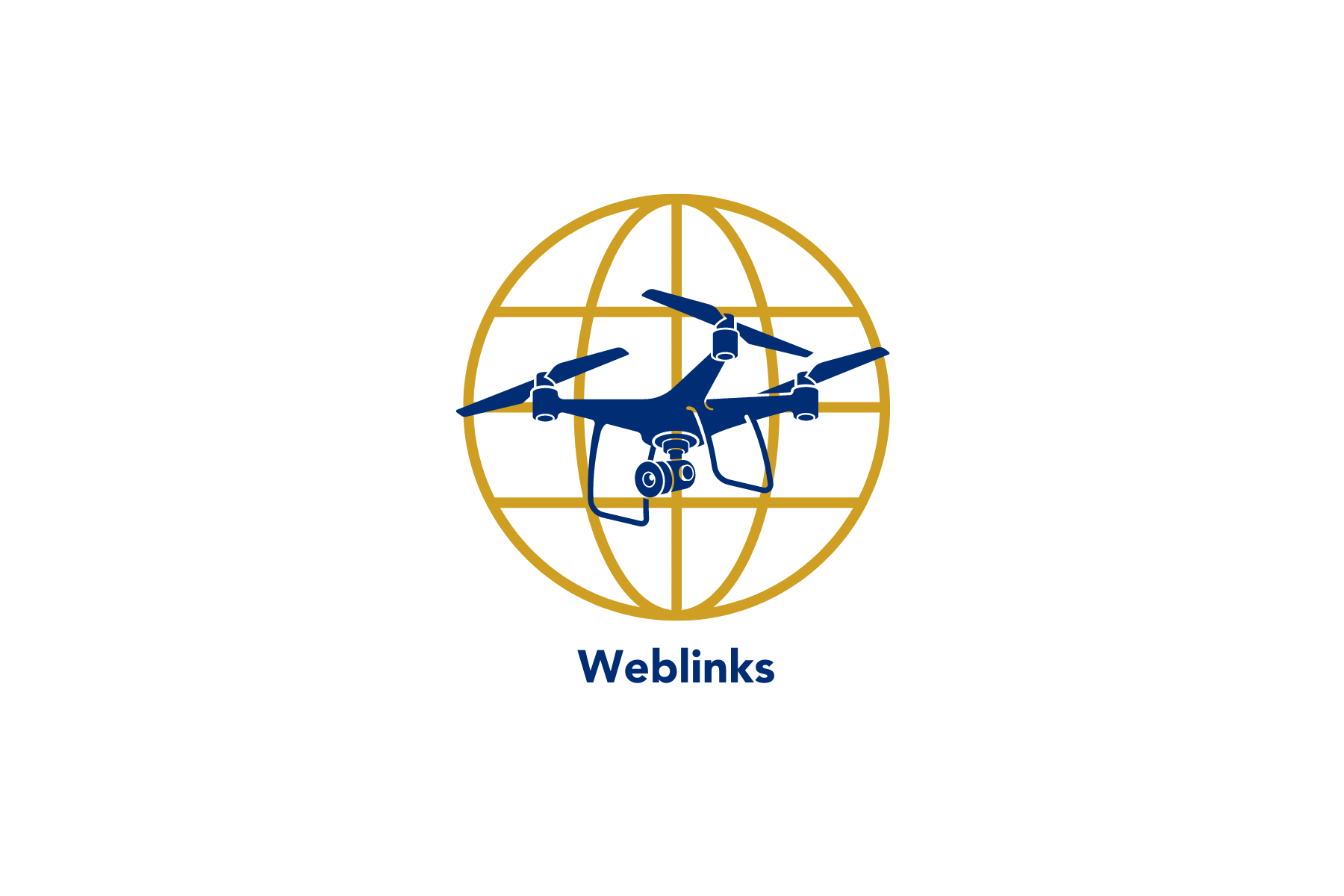
Other Weblinks
USC 44809
Exception for limited recreational operations of unmanned aircraft
Advisory Circular 91-57B
Exception for Limited Recreational Operations of Unmanned Aircraft
14 CFR Part 107 Guidelines
Public Aircraft Operation 49 U.S.C
Qualifications for public aircraft status
Drone Rules for Education
FAA Drones for Educational Users
User Identification Tool
What Kind of Drone Flyer Are You?
Special Authority for Certain Unmanned Systems (U.S.C. 44807)
Airworthiness Certification Process
Register your Drone
Remote Pilot Certificate
Certificated Remote Pilots including Commercial Operators
LAANC
B4UFLY Mobile App
The Recreational UAS Safety Test (TRUST)
